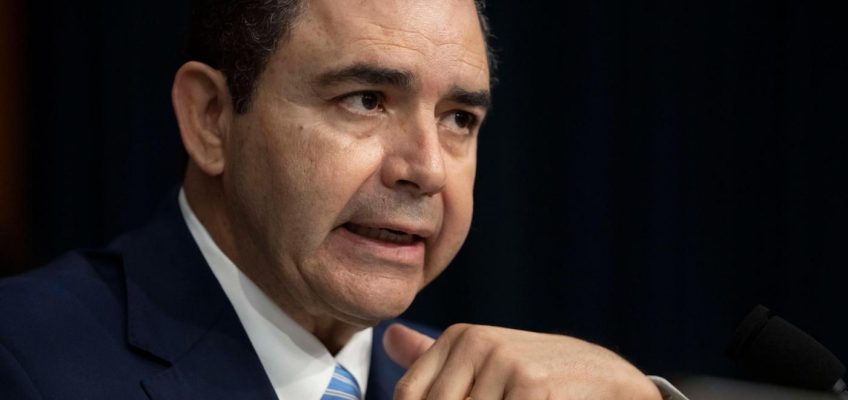By JULIA FRANKEL and SAMY MAGDY, Associated Press
JERUSALEM (AP) — Israel received remains of what could be one of the last hostages in Gaza on Wednesday and said it will begin allowing Palestinians to leave the war-torn territory through a border crossing with Egypt.
The remains found by fighters in northern Gaza have been returned to Israel, where they will be examined by forensics experts. Remains fighters handed over on Tuesday did not match either of the last two hostages in Gaza.
The return of all the hostages taken on the Oct. 7, 2023, attack that started the war is a key element of the first phase of the ceasefire that began in October. In exchange, Israel has been releasing Palestinian prisoners.
Under the terms of the ceasefire, the long-closed Rafah crossing is to be opened for medical evacuations and travel to and from Gaza. The World Health Organization says there are more than 16,500 sick and wounded people who need to leave Gaza for medical care.
It was not immediately clear when the border crossing would be opened, however, because of a dispute Israel is having with Egypt, which wants Palestinians to be able to return to Gaza through the crossing.
Israel says Palestinians will not be able to return to Gaza through the crossing until the last hostage remains are returned from Gaza. Egypt, which controls the other side, said the crossing would open only if movement goes both ways.
Once the last hostages’ remains are returned and Israel releases more Palestinian prisoners in exchange, the U.S.-backed ceasefire plan is supposed to advance to the next phases, which call for creating an international stabilization force, forming a technocratic Palestinian government and disarming Hamas.
Last hostages in Gaza are an Israeli and Thai national
Earlier on Wednesday, Prime Minister Benjamin Netanyahu said forensic testing showed that partial remains returned by fighters on Tuesday did not match either of the hostages still in Gaza. Palestinian fighters later said they had found more remains in northern Gaza and turned them over to the Red Cross, which is acting as an intermediary.
The two hostage bodies still in Gaza are Israeli Ran Gvili and Thai national Sudthisak Rinthalak. Gvili was an Israeli police officer who helped people escape from the Nova music festival on Oct. 7, 2023, and was killed fighting at another location. Sudthisak Rinthalak was an agricultural worker from Thailand who had been employed at Kibbutz Be’eri, one of the hardest-hit communities in the attack.
A total of 31 workers from Thailand were abducted, the largest group of foreigners to be held in captivity. Most of them were released in the first and second ceasefires. The Thai Foreign Ministry has said in addition to the hostages, 46 Thais have been killed during the war.
Opening of Rafah crossing complicated by dispute
The statement about allowing Palestinians to leave Gaza through Rafah came from COGAT, the Israeli military body charged with facilitating aid to Gaza. It said Israel would coordinate with Egypt on the exit of Palestinians, under the supervision of a mission from the European Union.
Those wishing to leave Gaza will require “Israeli security approval,” COGAT said.
The U.S. State Department’s Bureau of Near-Eastern Affairs, writing on X, cast the opening of the crossing as a measure that would afford “the most vulnerable Gazans” access to better medical care.
Palestinians who want to exit Gaza will be able to move through Rafah if Egypt agrees to receive them, Israeli government spokesperson Shosh Bedrosian said. But the crossing won’t be open for Palestinians seeking to return to Gaza until all of the hostages in the territory are returned to Israel, she said.
Citing an unnamed Egyptian official, Egypt’s State Information Service said, if an agreement is reached, the crossing will be opened for travel in both directions in accordance with the ceasefire plan advanced by U.S. President Donald Trump.
Egypt fears that Palestinians allowed to leave Gaza might not be able to return.
Egyptian President Abdel-Fattah el-Sissi has warned that Israel might prompt an exodus from Gaza as a way to permanently expel people and “eliminate the Palestinian cause” for statehood. More than 100,000 Palestinians that left Gaza after the war started, including those wounded in the conflict, have been living in Egypt, according to Egyptian authorities.
The Rafah crossing was sealed off in May 2024 when Israel’s military invaded the area. It was briefly opened in February this year for the evacuation of sick and wounded Palestinians for treatment, as part of the previous ceasefire deal.
Israel and Lebanon to hold talks
Netanyahu said Wednesday that Israel would send an envoy to talks with Lebanese diplomatic and economic officials, marking an “initial attempt to create a basis for relations and economic cooperation” between the two countries. Other participants in the talks are from the U.S., France and the U.N. peacekeeping force known as UNIFIL.
Israel and Lebanon have been in a state of war since 1948. Israel and the Lebanese militant group Hezbollah fought a months-long war that ended in a shaky ceasefire one year ago.
For Lebanon, Simon Karam, an attorney and former ambassador to the U.S., will take part in the talks, Lebanon’s President Joseph Aoun said. Israeli media identified its envoy as Uri Resnick, a former diplomat and the national security council’s deputy director for foreign policy.
Palestinian hospital says Israel killed a man in Gaza
A Palestinian man was killed by Israeli fire on Wednesday in Gaza Strip, a hospital said, marking the latest reported Palestinian fatality in Gaza.
Israeli forces shot the 46-year-old man in Gaza City’s eastern Zeitoun neighborhood, according to the Al-Ahli hospital, which received the body. Israel’s military did not immediately respond to a request for comment.
The hospital said the man was shot while in the “safe zone,” which, under the terms of the ceasefire, is not controlled by the Israeli military.
The Gaza Health Ministry says more than 360 Palestinians have been killed across Gaza since the ceasefire took effect on Oct. 11. The ministry sets the total Palestinian death toll from the war over 70,100. The ministry does not distinguish between fighters and civilians, though it says roughly half of those killed have been women and children. The ministry operates under the Hamas-run government. It is staffed by medical professionals and maintains detailed records viewed as generally reliable by the international community.
Return of Palestinian bodies in flux
Twenty living hostages and the remains of 26 others have been returned to Israel since the ceasefire began in early October.
Israel has been releasing 15 Palestinian bodies for the remains of each hostage as part of the ceasefire agreement. The Gaza Health Ministry said the total number of remains received so far is 330. Health officials in Gaza have said they have only been able to identify a fraction of the bodies handed over by Israel, and the process is complicated by a lack of DNA testing kits.
The exchanges have gone ahead even as Israel and Hamas have accused each other of violating other terms of the deal. Israeli officials have accused Hamas of handing over partial remains in some instances and staging the discovery of bodies in others.
Hamas has accused Israel of opening fire on civilians and restricting the flow of humanitarian aid into the territory.
The ceasefire aims to wind down the war that was triggered by the Hamas-led attack on southern Israel, which killed about 1,200 people and saw 251 taken hostage.
Magdy reported from Cairo. Abby Sewell contributed from Beirut.




